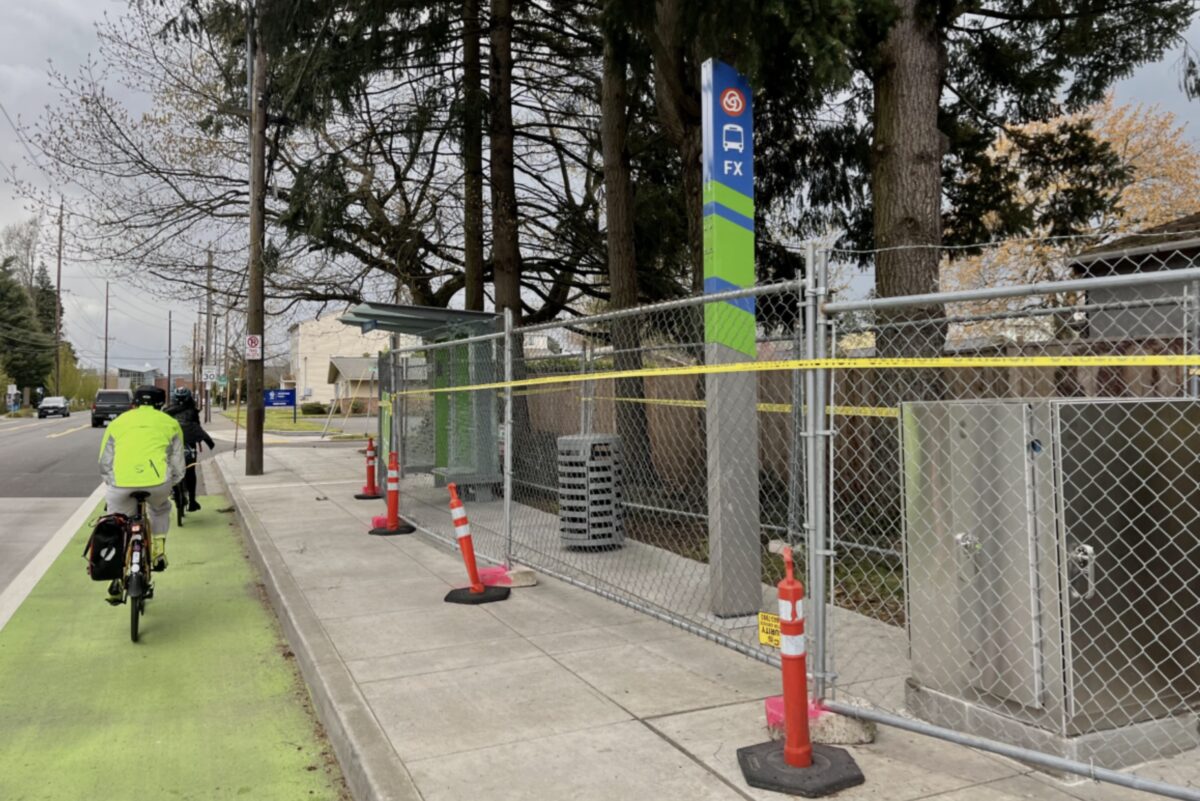
(Photo: Taylor Griggs/BikePortland)
After a week of temperamental weather, things were set to be mild this past Saturday for Bike Loud PDX’s ride to check out the progress on TriMet’s Division Transit Project (DTP).
“I probably don’t need gloves, an adequate jacket or a hat,” I thought as I ran out of the house (making excuses, because I couldn’t find any of these things and I was going to be late). As a result, I was woefully unprepared for the hodgepodge of elements awaiting us on this journey. But, as anyone who’s been on a Bike Loud ride knows, this crew is among the most skilled when it comes to making the best of less than ideal circumstances.
The group, which consisted of about a dozen people, met near the Tilikum Crossing around noon before heading east on the Clinton Street greenway. It was still sunny, but when I saw people rolling up wearing their rain capes, I knew I was in trouble. I joked that I kept avoiding buying good rain gear because I was superstitious about jinxing the weather – if I shelled out for a nice jacket, it seems inevitable that we’d have a month of sunshine and I’d never get around to wearing it.
Advertisement
Nonetheless, I was excited to get going. I’ve been wanting to check out the DTP for some time. This project, which broke ground in early 2020, has been quite a significant undertaking. The central component of this project is the enhanced bus service replacing what is called TriMet Line 2 with Frequent Express (FX) which will include longer buses with room for more riders (and bikes!), multiple-door boarding to reduce stop time, weather protected bus stations located strategically for rider demand and bus transit signal priority.
Mariah Lynch, a transportation studies graduate student at Portland State University and a project manager for Castle Rock Intelligent Transportation Systems, led the group on this ride.
“This is something to be excited about!” Lynch told me, explaining why she wanted to take bike advocates along this route.
Lynch wanted to show the bike projects happening on Division along with the bus enhancements. While she said things are getting better in east Portland, it still can be rough to bike out there.
“I think it’s important to show you guys what it’s like to ride in east Portland,” Lynch told the group. “It’s not the cycling Mecca it is in the Central City.”
This project coincides with the Portland Bureau of Transportation’s Outer Division Safety Project, which is focused on improving infrastructure for people walking and biking with signal upgrades and protected bike lanes. When you combine these projects, you have an outer Division Street that’s a lot safer and more efficient for people walking, biking and taking the bus – which is important because of how crucial this street is for getting around east Portland.
The DTP is sometimes referred to as a bus rapid transit (BRT) project, but the FX route won’t meet all the true BRT requirements: for instance, there isn’t going to be a dedicated bus lane on Division – cars and buses will share the same lane. However, the route upgrades are still substantial. One exciting element we’ve covered in the past is the new “shared bike and pedestrian” station design that emulates a model seen in places like Copenhagen.
Advertisement
Additionally, there are three “island” station designs for buses going east and westbound at 82nd Ave and 122nd Ave eastbound. TriMet’s Division Transit Project Engineering & Construction Manager Jesse Stemmler met up with our group at the eastbound 82nd Ave stop to give us a rundown.
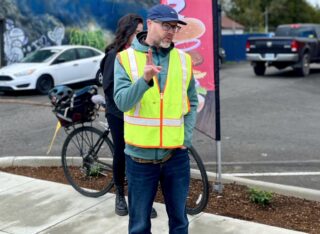
(Photo: Taylor Griggs)
“We were really looking at how do we integrate bikes, pedestrians and transit riders in a way that that facilitates all those safely in such a tight space,” Stemmler said. “Over a course of a few months, we brought stakeholders out to really test all kinds of configurations and try to find the design that worked best.”
Stemmler said that for people riding bikes, these new stations will integrate well with PBOT’s Outer Division Safety Project.
“There’s a protected bike lane that’s going in as part of the safety project. So in most cases, as you enter these platforms, you’ll be coming from a protected bike environment,” he said.
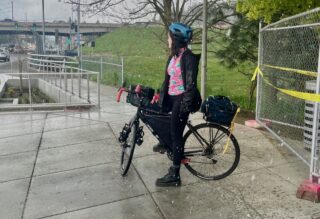
Stemmler said TriMet can’t complete all the station treatments until there’s a week or two of continuous good weather, which felt pretty impossible as we all stood in the freezing rain. But eventually, it will warm up, and the final touches can be made. Right now, the plan is for the FX line to start running this September.
By the time we were saying goodbye to Stemmler and riding away from the stop at 82nd, it was lightning, thundering and…snowing? We all laughed, because of course this would be our luck, but I was shivering and kicking myself for being so underdressed. Thankfully, Bike Loud member and friend of BikePortland Cathy Tuttle had some extra (handmade!) gloves for me, saving my hands from frostbite. (Ok, that might be an exaggeration. The point is: I am very grateful for Cathy’s kindness.)
The original plan was to end the ride with some $1 tacos at a food truck. But being near 82nd Ave, which is heaven for Portland Vietnamese food lovers, we decided to warm up inside at the Bun and Pho House on 82nd with some hot pho instead. I bought a hat at the Fubonn Shopping Center next door so I could make the journey home with my ears intact. But by the time we were done with our soup, the sun was out again, and our ride back west was leisurely and low-stress.
This ride was a great way to check out a project that a lot of people are excited about and that has very high expectations. But more than that, it reminded me how much fun it is to hang out in real life with people riding bikes. This will be my first summer in Portland, and since it’s also the first year since the pandemic that a lot of exciting events are back on, I’m looking forward to riding more!
(Stay tuned to our event calendar for details on upcoming Bike Loud policy rides.)



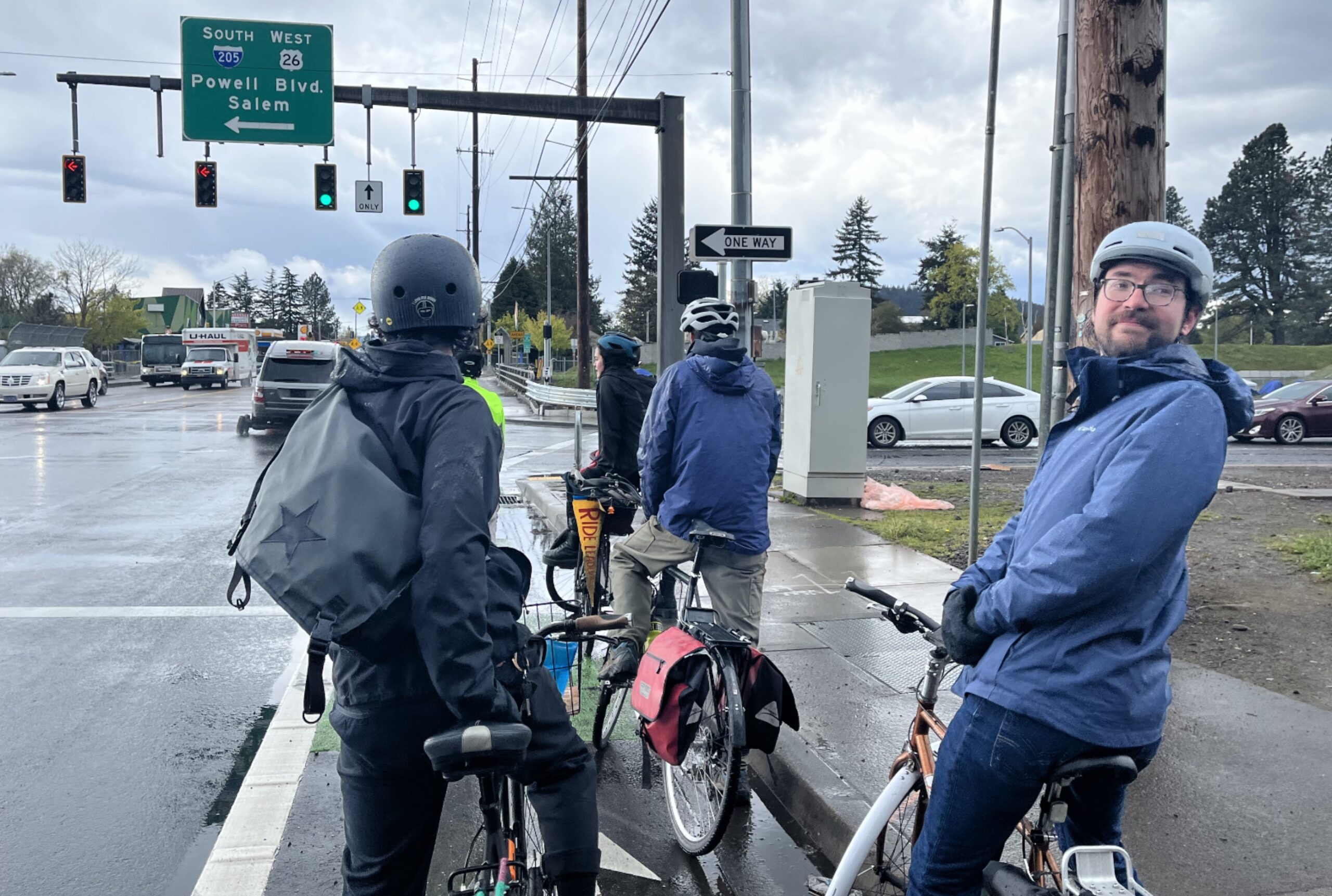
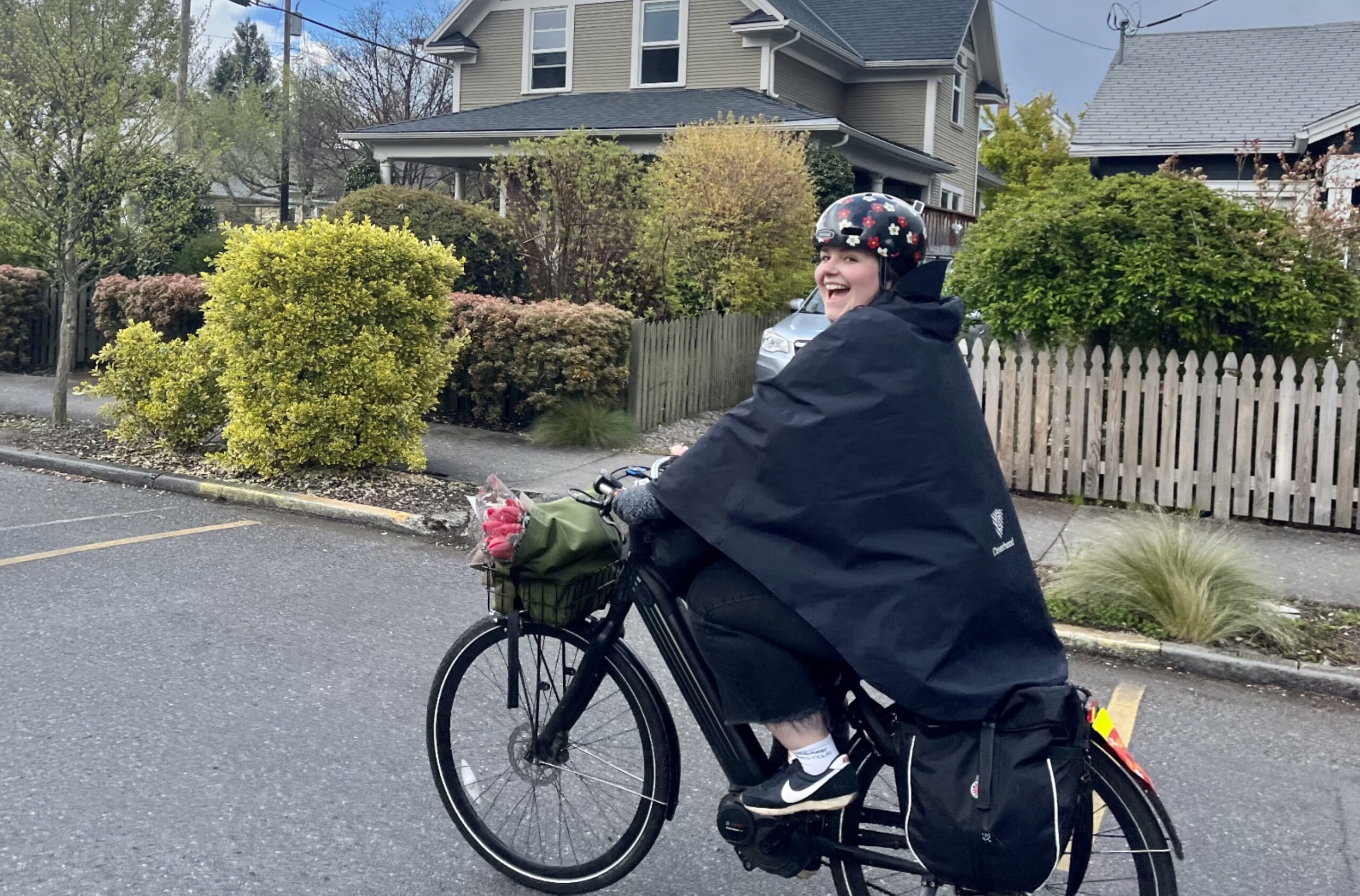
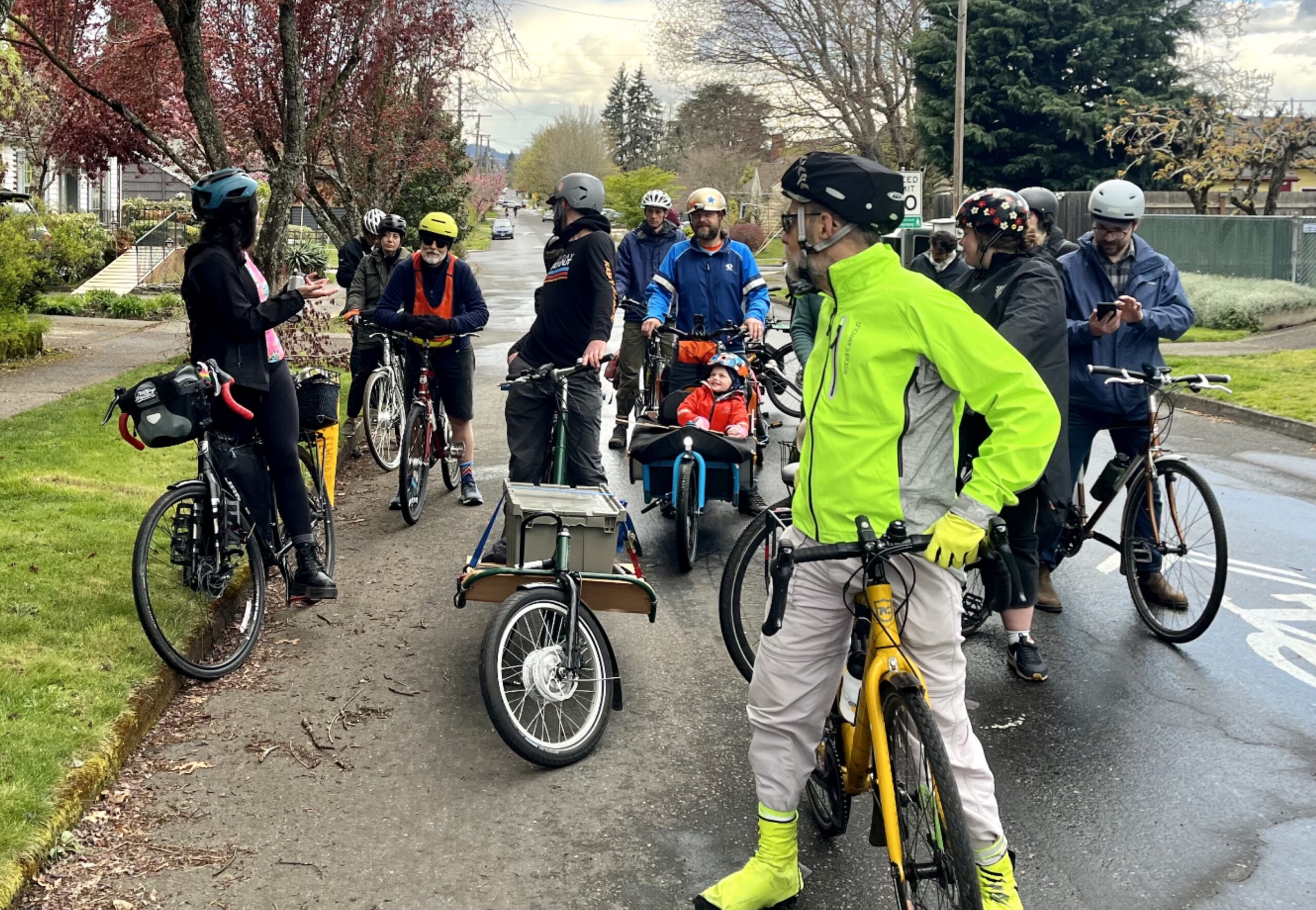
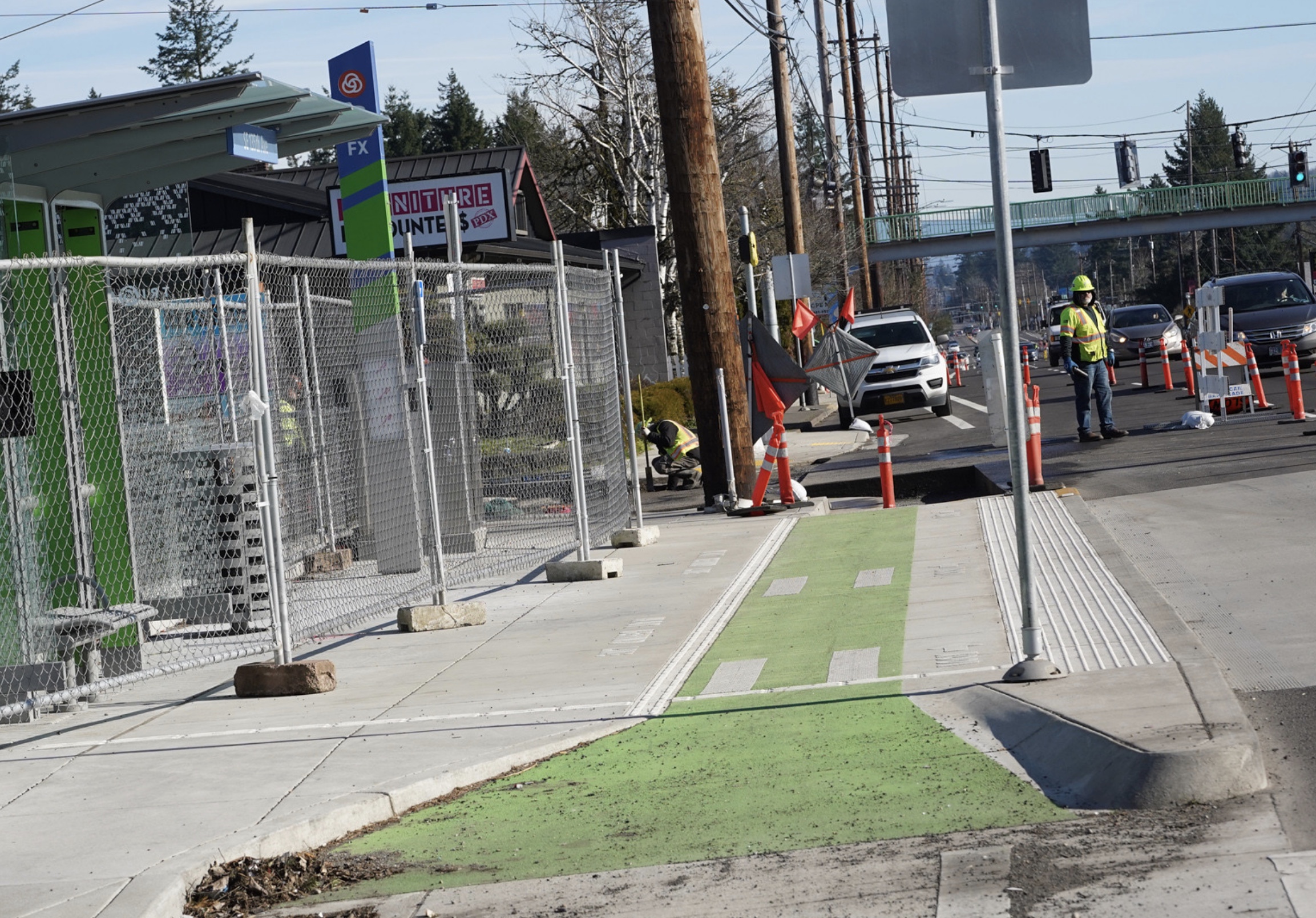
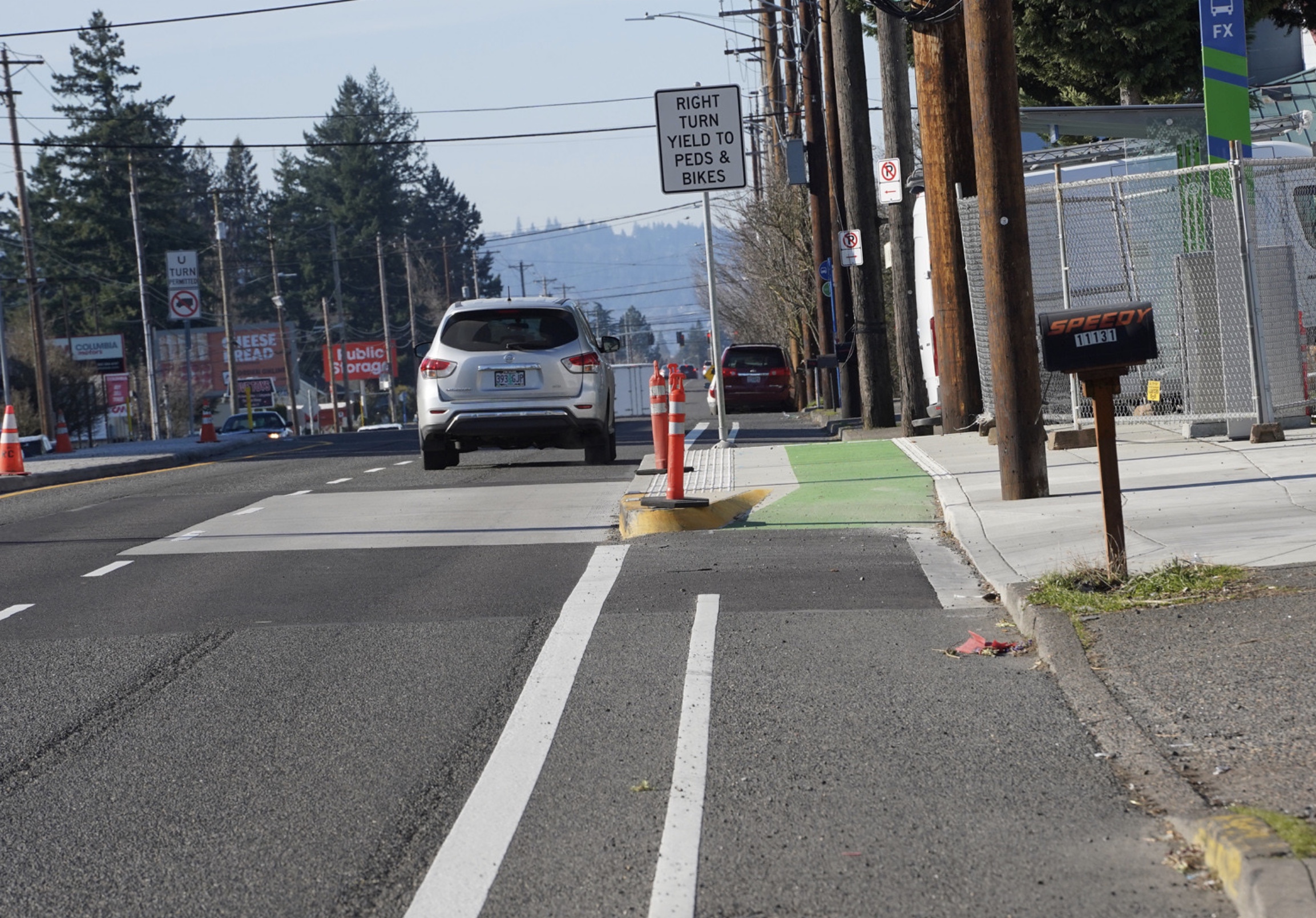


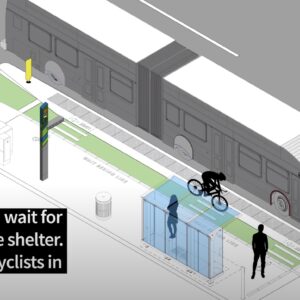
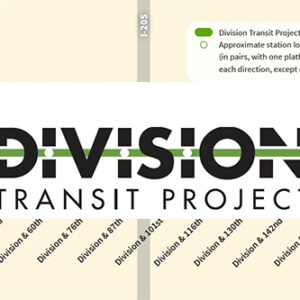
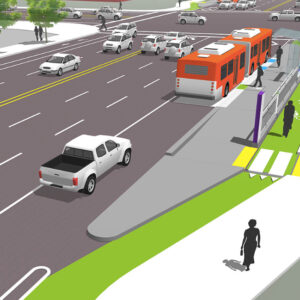

Thanks for reading.
BikePortland has served this community with independent community journalism since 2005. We rely on subscriptions from readers like you to survive. Your financial support is vital in keeping this valuable resource alive and well.
Please subscribe today to strengthen and expand our work.
A few more photos
https://www.facebook.com/media/set/?set=a.4797223843719792&type=3
Thanks, Amit!!
I don’t see any protected bike “environments” other than the stations themselves. I see bike lanes, some with green paint and some without. Are the protected lanes elsewhere and just didn’t happen to be captured in the photos?
Yes, the PBOT bike lane projects are not done yet. I plan to cover this in more detail and go check out the bike infrastructure soon.
Well, as you see in the first photo of the second set, there’s a white SUV “protecting” the bike lane from anyone on a bike who may want to use it. That’s how this is supposed to work, right?
nate, that gave me a good laugh. Thanks! I do not like how “protected” is casually thrown out in so many instances on this web site. Is a flexible post really “protection”? No, not for this bike commuter. Is a parked car “protection”? Maybe, at least it’s closer. A high curb is protection (like a jersey barrier). In no circumstances is a painted line “protection.” I’m speaking for myself, of course. But I think “protection” is used too much and becomes propaganda for the city and state.
I hear you. I was quoting PBOT’s plan and TriMet’s statements, because they have plans to add additional protection. But I should be more specific about what “protected” means in each circumstance. You’re right that that word is tossed around a lot by transpo agencies who want to hype up bike projects. It would be good to detail what that means exactly.
I hear you, Taylor. It’s just something that gets under my skin though I know that there is more to come. Look forward to it — and your continued efforts to hold the agencies to the fire.
The long stretches of SE Division where the bike lanes will be completely unprotected due to the presence of existing driveways are really unfortunate. I get that PBOT / TriMet can’t do much about existing land uses along the route, but they really need a better solution than just paint. Or a recent trip to Guadalajara I noticed a bike lane where they used little bollards where the protection is interrupted by driveways. It would be great to see something like that here.
Botts’ dots! https://en.wikipedia.org/wiki/Botts%27_dots
(Although apparently in OR & WA they’re called “turtles”?!)
I agree that’s a pretty good solution to an unfortunate situation.
“I think it’s important to show you guys what it’s like to ride in east Portland,” Lynch told the group. “It’s not the cycling Mecca it is in the Central City.”
I’m impressed you all made it to 82nd Ave. on the ride. I did notice a pic of riders under the I-205 freeway scoping out the ODOT STIP project completed last year. https://www.portlandoregon.gov/transportation/article/732568?msclkid=7c8d11afc02011ecba92bf1537eb4f74
Wait until this summer and we’ll do a ride on the scary part of Division. 82nd east to the city limits.
Please note that these stations are experimental with the ride through bike/ped areas. I think we can all hope they will be safe for cyclists and transit riders. We’ll know soon enough. For now we need to keep replacing the new signs and wands that have been damaged by vehicles.
We actually got all the way to SE 122nd.
Maybe, just maybe, you’ll one day get to 175th and the Portland/Gresham city line…
Several dozens of blocks too far for the “inners”, apparently.
Hi Curly,
your last sentence is key, most of this is not simply damage, much of it is intentional and therefore becomes too expensive, doesn’t get replaced because they can’t keep up or afford it.
The on demand crosswalks like on SE Stark at 133rd hasn’t had the center island flashing lighting for months from being mowed down on an often weekly or more often basis. Many of the other various bollards are not in place for more than a few days either. The newer left turn lane deflector bollard bases are actually more dangerous if you take the lane and bobble over the base when you are trying to be vigilant about the traffic that is trying to run you over. Cars regularly become erratic when then bounce over them as well getting startled and not staying in their lane.
All this “protection” is more dangerous in many cases as it fosters a false sense of security to the riders and pedestrians that cannot afford it for lack of experience or realization of the true potential danger.
No street is ever “complete”, but it is nice to see some incremental improvements on outer Division. Great photos!
They had better install some large “Yield to Pedestrians” signs coming up to those bus stops. Personally I would rather negotiate with bus drivers and bike next to cars at bus stops than deal with clueless pedestrians glued to their phones standing in or crossing the bike lane.
Thanks for the story! It really shows how transit, biking, and walking all benefit from projects like these. One of the more important improvements is the safer crossings of outer SE Division this project did. Crossing streets is generally when I feel least safe, especially wide streets like that. I don’t know the data, but I suspect people crossing streets is where pedestrian fatalities are highest.